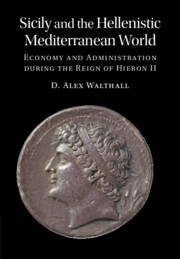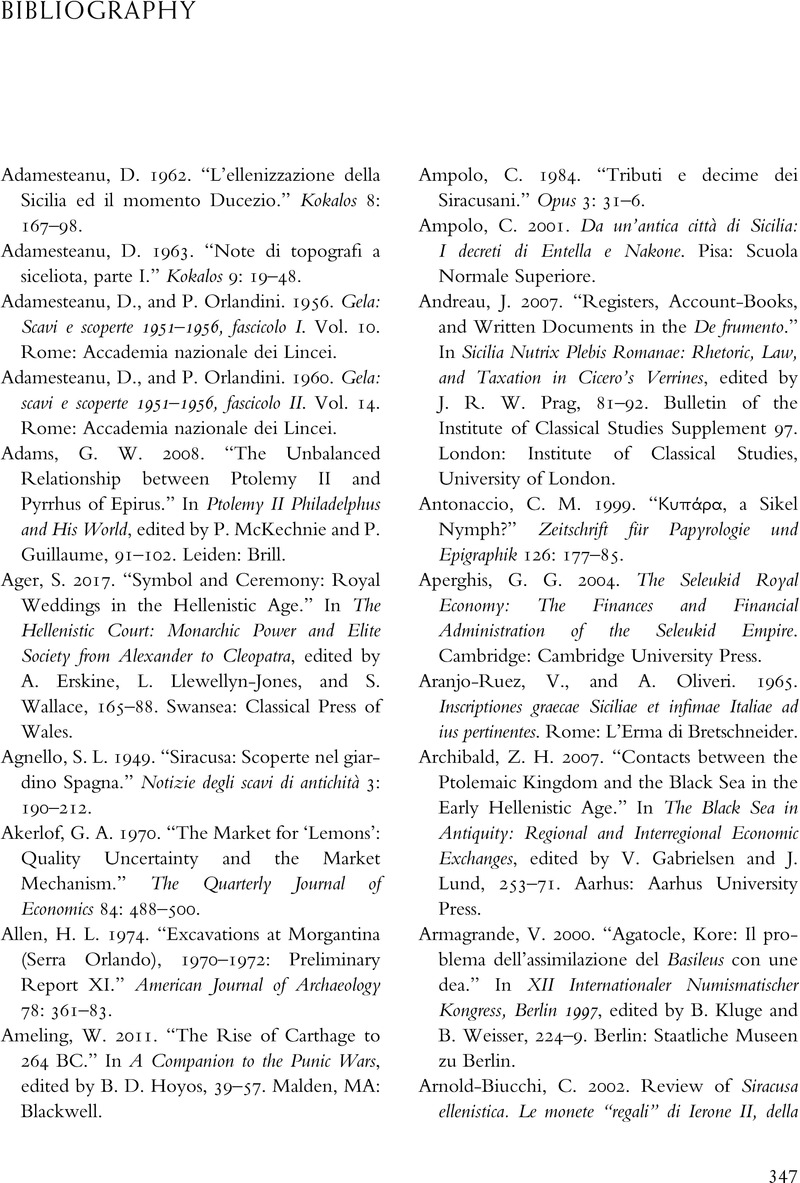 Sicily and the Hellenistic Mediterranean World
Sicily and the Hellenistic Mediterranean World Bibliography
Published online by Cambridge University Press: 27 January 2024
Summary

- Type
- Chapter
- Information
- Sicily and the Hellenistic Mediterranean WorldEconomy and Administration during the Reign of Hieron II, pp. 347 - 384Publisher: Cambridge University PressPrint publication year: 2024


